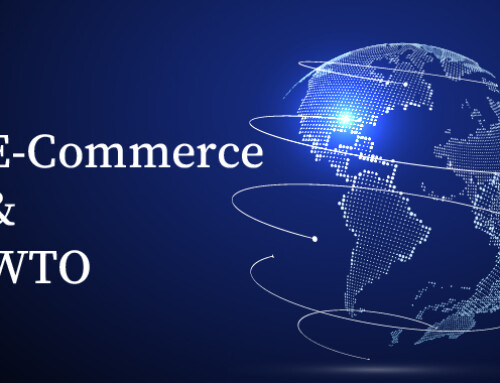Contents
The use of contactless payment technology is the latest way to make payments at online businesses as well as retail stores. Contactless technology is more secure than magnetic-stripe cards, which are easy to copy and clone, and can cause identity theft and fraudulent charges.
Enabling contactless payment for your business may sound like a costly expense, but it doesn’t have to be. With a few simple steps, small businesses can begin accepting payments through mobile devices without spending a fortune. Companies like Square, Google Pay, and PayPal make mobile payments easy for business owners. Read on to learn about the benefits of this new technology and what Apps are available for businesses.
The Advantages of Contactless Payment for Your Small Business
Quicker checkout process
The benefits of using contactless payments are numerous. They can save you a significant amount of time, as you no longer have to insert your card into the POS. Contactless payments are especially handy for micropayments and low dollar value purchases, such as at the check-out terminals of parking garages and public transportation turnstiles. They also help you avoid long lines at checkout kiosks and payment terminals for road tolls. Contactless payments require the card to be held within a certain range and flat for the transaction to be completed.
In addition to the faster checkout process, contactless payments also allow consumers to avoid long lines and make a purchase even faster. Instead of swiping a credit or debit card, a buyer can wave their device near a reader and verify their identity with a fingerprint or facial ID. Contactless payments also allow for an easy email receipt, which means that customers will not have to wait in line for a long time. A simple, quick checkout process is a surefire way to increase conversions and boost sales.
Better Security
Another significant advantage of contactless payments is security. Unlike credit cards, contactless payment is not subject to hacking, allowing shoppers to feel confident while shopping. And since contactless payments only take a few seconds to complete, the whole process becomes faster than before. Contactless payment can also help stores avoid long checkout queues. In crowded indoor environments, long queues add a significant amount of friction to the customer experience.
More Customer-Friendly
When you use contactless payment for quicker checkout, the process shouldn’t take longer than 10 to 15 seconds. It’s also important to make it as easy as possible for shoppers to follow the instructions of the terminals. Some contactless payment terminals even allow customers to use their smartphones to make their purchases. However, they will require the customer to first create a digital wallet, which requires their credit or debit card and bank account information.
Contactless payment is a convenient way to complete a transaction with a smartphone, a contactless-enabled debit card or a key fob. Contactless payments allow the customer to complete their purchase by just pointing their mobile phone, digital wallet, or smart watch at the terminal. This payment method eliminates the need for a long line at the checkout counter. By making it easier for customers to pay, you’ll see a marked reduction in checkout lines. This will translate to increased business and happier staff.
Are Contactless Payments Secure?
Unlike traditional credit card transactions, contactless payments do not require unnecessary touching and can move lines along much faster than regular cash. They can also be more secure than traditional methods, such as EMV chips since contactless transactions don’t require the swipe of a card. While every payment method has its own risks – lost cash, compromised mag-stripe cards, and hackers able to duplicate them – contactless payments are by far the safest and most convenient.
Unlike traditional card payments, contactless payments do not involve a card reader or PIN pad. Contactless payments only require the customer to touch the card or mobile phone, and therefore are safer. Most retailers do not sanitize their card terminals between customer transactions. Because there is no physical contact between the customer and payment hardware, they are not as prone to spreading germs. Contactless payments can also be used on the internet or over the phone.
While contactless payments have the advantage of eliminating the need for signatures, they can still pose a risk. Since card issuer fraud departments are highly advanced, if you notice suspicious activity, it is best to contact the card issuer. Fraud monitoring services are not always reliable, so it’s important to have a separate method of fraud detection. You can’t trust the security of contactless payments for your business to a third party.
Adding contactless payment options to your business is important for several reasons. It makes your customers more convenient by reducing the need for customers to carry cash. For example, a customer who is out for a jog may stop by your store without carrying their wallet. It is not always convenient for them to stop and pay, but it’s a safe option for consumers who prefer this method. So, if you want to increase your business, consider adding contactless payments for your customers.
A recent Forbes study found that contactless payments will increase by 15 percent between March and June of 2020, a timeframe that’s suitable for your business. Consumers are discovering the convenience of tap-to-pay. And they’re also less likely to pick up germs, as mobile wallets don’t require card information. It’s also faster, so your customers won’t need to wait as long.
Cost of enabling contactless payments at your business
The cost of enabling contactless payments at your business is a small one when compared to the benefits you can expect to receive. Consumers have become increasingly accustomed to using contactless payments and most major banks are issuing tap-and-go cards. Contactless payments will continue to grow in popularity and will become the standard in most stores and restaurants. Businesses should consider implementing the technology to stay relevant and competitive. A contactless payment dock and reader will cost between $49 and $29.
Using contactless payments will improve the customer experience. These methods have been adopted by many businesses globally and do not require a customer to use their hands. Additionally, contactless payment does not require a signature, which means fewer transactions are required. Ultimately, you will save time and money by eliminating queues and enabling customers to pay without interacting. If your business does not accept contactless payments, you will likely lose potential customers.
Embracing contactless payments is easy, as long as your business already accepts credit cards and mobile payments. Once you’re ready to accept this new payment method, you’ll need to install a payment terminal, payment reader, and software. If you’re ready to accept contactless payments, make sure to check with your payment processing provider that they accept digital wallet payments. After installing the equipment, you’ll need to train your staff and begin testing it.
The cost of enabling contactless payments at your business will depend on your specific needs. While some payment systems are inexpensive, others may require you to purchase multiple products from several providers. A small business cannot afford to add unnecessary features. Enabling contactless payment options is a smart way to streamline your business, and you can start today by learning more about this innovative payment method. It’s possible to make the transition to contactless payments today. So, why wait?
Of course, enabling contactless payment for your business will include some costs, but it will increase your profits and make your customers happier, ensuring more loyalty. In addition to increased sales, contactless payments provide convenience and speed for customers. However, a cautious mindset might prevent some businesses from taking the leap into embracing this new technology. Contactless payment technology has already revolutionized the way we pay for goods and services. Let’s take a look at some of the more popular examples of contactless payment.
3 Types of Contactless Payment
Apple Pay
If you are looking for a new way to pay, you’ve probably heard about Apple Pay. The new contactless payment method combines the convenience of cash and the security of contactless payments. The Apple Pay security tokenization process replaces the consumer’s credit card account number with a series of random numbers. These tokens travel over the payment network and the Internet, processing the payment without disclosing the consumer’s bank account information.
To make Apple Pay work, you simply hold your iPhone near a contactless reader. Then, you’ll see a checkmark or “Done” on your iPhone’s screen. Then, you’ve completed your payment. In some cases, you’ll need to enter additional information for authentication. If you don’t have an Apple Pay compatible credit card, you can still use your Visa or MasterCard. It’s important to know that the reader is secure to avoid fraud.
Apple Pay also helps prevent fraud. A thief might steal your wallet before you realize they’ve been ripped off. If he or she has your iPhone, they may make several purchases before they report the theft. But with Apple Pay, there’s no need to worry. With your Touch ID fingerprint and the Apple Pay logo, you’ll be able to make a purchase anywhere that accepts contactless payment.
Although Apple Pay is still in its infancy, it’s now widely available in several countries, including the United Arab Emirates. It is available in the United States, Canada, Brazil, India, UAE, Mexico, the Philippines, Peru, and Thailand. In the United Arab Emirates, it is also compatible with Itau Unibanco credit cards. And the service has even expanded to Brazil, where users can use it to pay for goods and services.
In 2015, Apple Pay was available exclusively through the American Express partnership, but was soon rolled out to other major banks. The first Australian bank to support the service was ANZ in April 2016. In the United States, a few other countries soon followed. Visa, MasterCard, and eftpos will also accept the new payment method. The iPhone will be the primary device for merchants. In Canada, Apple Pay support is expected to expand to all major banks by April 2020.
The iPhone maker is hesitant to launch Apple Pay in India, where it has been at the forefront of mobile payments. However, the country’s users have become much more advanced since then. Many Indians now use mobile payments rather than cash, and Apple’s decision to delay its launch is no reflection on Apple’s market success in India. If Apple wants to bring Apple Pay to India, it must first address the security issues that have stymied its launch in other countries.
Contactless debit and credit cards
The US banking industry failed to embrace contactless cards from 2009 to 2013. The payment industry is highly fragmented, and the banking sector pursued several different contactless payment strategies. Banks were legally required to transition to the EMV standard by 2015, which has chips for data storage instead of magnetic stripes. The EMV standard requires issuers to spend substantial resources developing the chip card technology. As a result, most banks issued single-interface chip cards with no antennas.
Some credit and debit cards support contactless payments. A contactless credit card can communicate with a nearby terminal using Near Field Communication. You simply wave the card over the reader or tap it on the terminal to make a payment. After you have entered your PIN, you will receive a receipt. While many cardholders are skeptical of contactless technology, it’s gaining popularity and will soon be available to the public.
While contactless payment technologies have several advantages, the technology is not yet universally available. Not all consumers have a bank account, and consumers may shy away from a store that doesn’t accept contactless payments. Additionally, contactless payments can’t replace cash. Some demographics, such as the elderly, don’t have access to mobile technology. Further, contactless payments may not be available for the poor. For these people, the cash option may be more convenient.
There is a significant reduction in the volume of cash transactions attributed to contactless credit cards. Fung et al. (2014) estimated the decline in cash volume at half a percentage point, whereas Chen et al. (2017) used both pooled and cross-sectional data to estimate the reduction in cash usage. Their findings show significant differences between adopters and non-adopters, despite the fact that the data is only partial and not random.
Unlike magnetic stripe cards, contactless debit and credit cards use radio-frequency identification to authenticate card data. This way, a store does not receive any personal information. In addition, they are faster to use than other payment methods. Unlike the traditional swipe and insert method, a tap and go process takes only a few seconds, so they’re faster than other payment methods, such as cash payments. Contactless debit and credit cards are more secure and convenient than ever before.
American Express has jumped into the race to issue contactless cards, claiming that they’re the most secure payment method available. The American Express Consumer Card has been contactless since July 2019. Other major banks are following suit. Chase and Wells Fargo have issued 20 million contactless cards since the pandemic hit. They expect this number to double from last year. But some people are still hesitant to use the technology and opt for a chip card reader.
Although the impact of contactless payment on cash usage is still unclear, it’s worth noting that consumers are likely to use less cash when using contactless cards. Further, the influence of contactless technology on the cost of payment cards is expected to be larger than the amount of cash consumers spend on the cards. This technology will most likely be substituted for low-value payments that occur frequently and with a relatively minimal budget impact.
NFC-enabled mobile wallets
Consumers and merchants alike are concerned about security when using NFC-enabled mobile wallets. Security is paramount in any form of payment, and NFC payments are no different. NFC-based mobile wallets are a great solution to this problem, but they do come with their own set of challenges. For example, some security concerns include the possibility of stolen devices or cards. However, these problems aren’t unique to NFC. Many mobile wallets and other devices that utilize NFC technology require multi-factor authentication.
Many consumers are still wary of using contactless payments, even with mobile wallets, or tapping their cards. However, a recent study revealed that more than half of people aged 18 to 24 said they would use tap-to-pay technology to pay for purchases. This result is a major milestone in the history of NFC payments. While many consumers remain skeptical, it is important to note that there are some advantages to NFC payments for consumers. For example, mobile wallets can facilitate loyalty programs and discount programs that are synced with the NFC payment functionality. Branded mobile wallets can even tie with loyalty and discount programs, providing customers with valuable rewards such as rewards points and discounts.
In order to make contactless payments, consumers must first download an application on their smartphone that is compatible with NFC. These applications are often free, and users can download them for free from the respective app stores. Once installed, these apps can be used to pay at many locations. Consumers can use their mobile wallets to send money to friends and family. Several payment providers offer NFC-enabled mobile wallets.
Mobile wallets that use NFC technology will allow users to pay at a wide range of merchants with a tap of their smartphone. This technology is also transforming the way people share information, transfer money, and make payments. Apple Pay, Google Pay, and other mobile wallets are popular examples of these new technologies. But NFC is just one of the many ways to take advantage of this technology.
NFC-enabled mobile wallets are not yet available for all cell phones. However, the most popular models are the Samsung Galaxy Series, the Google Nexus Series, and the iPhone. For Android users, there are apps like Pomelo Pay, Google Pay, and Samsung Pay. These apps can help users with NFC payments, as well as people who don’t want to use a smartphone to make payments.
In addition to protecting the information of consumers and businesses, mobile wallets can help protect the privacy of their customers’ details. For instance, mobile wallets can tokenize their bank account details, making it difficult for fraudsters to steal them. And mobile phones come with a host of security protocols. Fingerprint recognition, for example, ensures that no one else can use the card without identification. And the use of NFC technology in mobile wallets makes NFC payment even safer.
Apps that can help you enable contactless payments at your business
Contactless payments are becoming increasingly popular, but the right payment app for your business will depend on your customer base and business structure. While using Apple Pay and Google Pay is easy and popular, setting up a business account with PayPal or Venmo is not. These services require training for your staff. Contactless payments are something most businesses should consider, especially if they accept credit and debit cards. Listed below are the Apps that can help you set up contactless payments at your business.
Digital wallets are another useful app for business owners, as they can pre-populate payment information at checkout, making the process easier and less error-prone. If you’re a business with a brick-and-mortar location, digital wallets are especially important. Many customers may not even purchase from your store, but they’ll likely use your mobile app if they want to pay for their purchase.
Contactless payment is a fast and convenient way to make purchases without touching anything. Contactless technology involves chip cards and other devices that allow consumers to pay without ever touching the terminal. Contactless payments are also highly secure, so customers can pay with their phones without exposing their credit cards to a security risk. Despite the security concerns associated with contactless payments, they’re still an excellent choice for many businesses.
Disclaimer: The content provided on this blog is for informational purposes only and does not constitute legal, financial, or professional advice.






